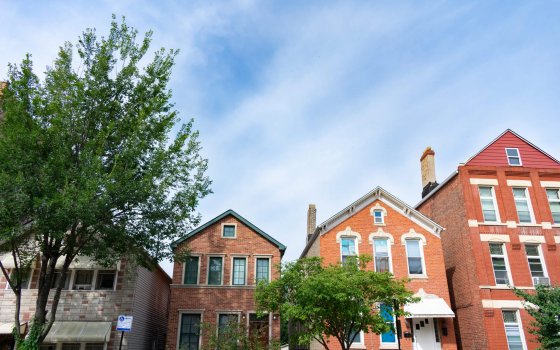- January 16, 2020
- CINC Systems

As a homeowners association (HOA) manager, flexibility is key. You need to be able to adapt to new situations and find creative ways to solve problems for your clients. Additionally, HOA managers must adapt to new municipal laws and other changes that affect their clients’ associations. Today, one of the biggest changes facing many HOAs is called upzoning.
Upzoning can be a confusing concept, but it’s important to understand. Learning about upzoning will help you advise your HOA clients if, or when, this issue impacts their community. Additionally, upzoning may affect your association management business.
Here’s a guide to upzoning that will provide you with the information you need in order to handle this for your clients and your company. Remember to consult your clients’ local laws, as upzoning may vary from state to state or city to city. When in doubt, it may be worth consulting an attorney for help.
What is Upzoning?
Upzoning is a type of land-use regulation implemented by communities to change zoning laws. Upzoning can change an industrial area to a residential or mixed-use area. It can also allow communities to increase their population by building denser housing units.
Upzoning is a part of urban regeneration, often implemented to provide more affordable housing solutions. Upzoning often comes with legislation that provides tax incentives for construction companies and property owners as well.
There are several examples of upzoning successes in communities across the United States. Upzoning has improved housing on the east coast, west coast, and in the midwest. By allowing cities to create new neighborhoods (upzoning from industrial to residential or mixed-use) or expanding existing neighborhoods (allowing denser housing), upzoning can change the face of a community.
One type of upzoning grants property owners the ability to create more duplexes, triplexes, and back-houses or garden apartments. This fills the so-called “missing middle” in many suburban residential communities because it helps create more affordable housing for lower-income families and singles.
Pros of Upzoning
There are several advantages and benefits associated with upzoning. The primary pro is that upzoning increases available housing in desirable communities. As city populations grow, housing costs rise.
This makes the market for homeownership and renting much more competitive and can force people to move further away from their jobs, which strains infrastructure. Upzoning helps provide relief from these issues. When there are more housing units available, the excess supply can lower the costs for everyone.
For HOAs, upzoning means the association can boost its membership numbers. New properties can be built in the HOA’s community, expanding the neighborhood and increasing the residential population. If the HOA allows residents to rent or sublet their homes, upzoning can also benefit homeowners who want to earn extra income from their property.
As an HOA manager, the main benefit of upzoning is that it can lead to new clients. Upzoning allows for the creation of new community housing developments. When these new developments form an association, they’re going to need a skilled manager to help operate their community. Upzoning means more business for HOA managers.
Finally, upzoning can breathe new life into a city. New housing developments, especially in mixed-use areas, can invite all sorts of businesses, from retailers to restaurants and entertainment venues. This makes neighborhoods more desirable and guarantees that people keep moving in, so there won’t be any shortage of work for HOA managers.
Cons of Upzoning
Upzoning is a relatively recent trend. It’s also enacted in many different ways. One community’s upzoning may be a great success, while another community may struggle to change zoning laws for the better. It’s a complicated matter that largely depends on local governance and the economy.
For example, zoning changes that don’t offer tax incentives for new construction may not create very much change within a community. Upzoning without regulations about affordable housing can also have a negative impact if the new residential areas aren’t affordable.
In some cases, upzoning can open the door for large commercial housing corporations to buy land and purchase buildings. When this occurs, it results in a monopoly of property ownership that can have the opposite effect than what’s intended by the upzoning laws. Housing monopolies can drive up the cost of living in a community without adding anything of value.
Upzoning that’s improperly implemented can create luxury apartments in areas where the greatest need is actually homes for families. Luxury apartments don’t ease the housing crisis. In fact, by driving up rental prices in an area, they can have a negative impact on the community as a whole.
Finally, upzoning may also result in a lot of red tape. As an HOA manager, you may find yourself facing more bureaucratic hoops to jump through if you’re managing an association in an area that suddenly becomes subject to upzoning. Since these laws are newer, there are many unknowns that can complicate your clients’ HOAs.
Manage New Clients with CINC Systems
Experts disagree about whether upzoning is a net positive or a poor idea. We may have to just wait and see how upzoning affects the HOA industry. There may never a clear answer because upzoning laws may never be universal, so upzoning in one community might be a change for the better while hurting another community.
As an HOA manager, continue to educate yourself about upzoning and other issues that affect your company and your clients. As you acquire new business through upzoning, remember to manage your clients with CINC Systems. CINC Systems offers all the tools you need to effectively manage any association in any neighborhood, upzoned or not.
To see how CINC Systems can make an impact, click here to request a free software demo.
Related Reads

Blog
Keeping Calm and Carrying On: Leadership Tips for Turbulent Times
- November 20, 2024

Blog
AI at Bat: What Umpires, Baseball, and Data Security Can Teach Us About AI Risks
- October 28, 2024

Blog
Do I really need a homeowner app when I have a mobile-friendly website?
- October 14, 2024

Blog
Weathering the Storm: How to Adapt to Soaring HOA Insurance Costs
- October 1, 2024

Blog
How Today’s Generative AI Investment Drives Long-Term CAM Success: A Timeline
- September 16, 2024

Blog
A Common Sense Approach to Simplifying Budget Planning Get ready to conquer HOA budget season with this effective strategy
- September 2, 2024
